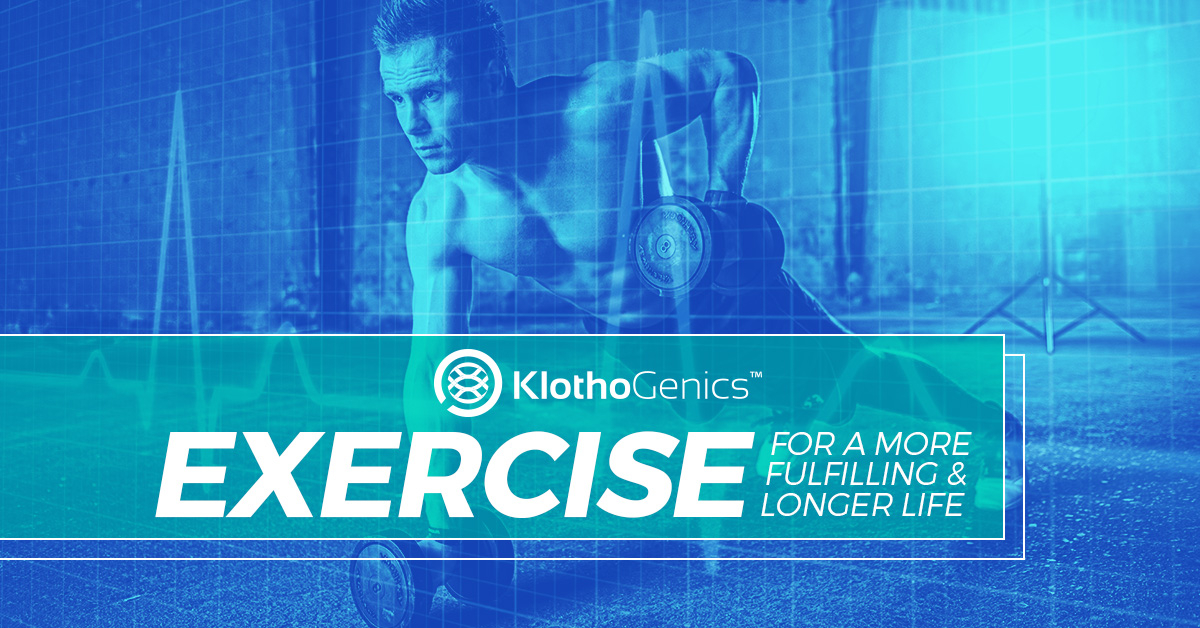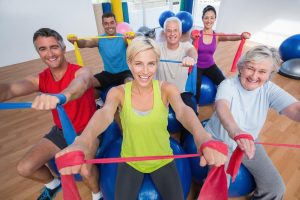When January rolls around, many of us have “losing weight” on our resolution list along with eating better and getting into “shape”—exercising or going to the gym.
Lifestyle Programs Tailored to Your Unique Genetic Profile

Exercise So You Live A More-Fulfilled, Longer Life

These are great resolutions that should be made every day, not just every five years.
Let’s start with exercise.
Whether it changes your shape or not, exercise improves your life. That means the pressure to look like a 20-something fitness model can be thrown by the wayside! You can exercise with peace of mind that physical activity benefits you no matter how you look afterward!
Why Do We Exercise?
Ask someone why they are taking up exercise, and they’re likely to state one of the following:
- Weight loss
- Increased energy
- Better sleep
- Increased muscle strength
But did you know that the most important effect of exercise is disease prevention and cognitive health?
That’s right — all of that happens on the inside of our bodies where no one can see it. It’s the greatest impact exercise has and should be the driver for going to the gym.
Establishing Appropriate Goals
I believe in establishing appropriate goals and monitoring your progress so you receive appropriate rewards for your effort.
Typical goals might be to lose weight or increase muscle strength, but additional health goals should be added that can be easily monitored such as improving your resting heart rate, lowering blood pressure, and improving your sleep quality and mood.
Exercise will help all of the following areas:
Your heart.
After you’ve been exercising for a few months, your resting heart rate and recovery time will lower because your heart will be pumping more efficiently. The beat-to-beat variation between your heart intervals will also increase with exercise.
Helping the heart work more efficiently will be a decreased blood pressure, which should lower after a few months of exercise.
Your overall well-being.
Regular exercise has the ability to make you a better all-around person. How? Your sleep quality will improve, fatigue will lower, you’ll have greater energy and your mood will improve.
Not only will it be easier to be you, it will be easier to be around you!
Your test results.
When you go in for your yearly physical, the doctor should be much happier with your results. Why?
Because your screens for glucose, hemoglobin A1C, HDL, CRP, TNFalpha, IL-6, etc. all improve with exercise.
Your body.
This is the one we all want, right? How we look is our first impression and — even if we are actively trying to lose weight — regular exercise should get you there. If it doesn’t, it may be worth doing a genetic screen and evaluation.
After regular exercise, you should see improved weight and waistline measurements, improved BMI, body composition, and bone mineral density.
Choosing a Plan
There are many exercise options out there - which do you choose? Determining which is best for you will depend on many factors, including your genetic predisposition (if you don’t know your genetic predisposition, reach out for a consultation).
Types of Exercise
- Cardiovascular Training. This is any exercise that increases the heart rate for a prolonged period of time.
Examples: walking, running, sprinting, cycling, using an elliptical, kickboxing, boot camp, etc.
Result: Improved lipid profile, increased cognitive function, improved insulin sensitivity, and more.
- Resistance Training. This is any exercise that causes skeletal muscles to contract against an external resistance.
Examples: body weight exercises, strength machines, free weights, resistance bands.
Result: Improved muscular strength, increased lean body mass, increased metabolic rate, improved bone mineral density.
- Flexibility Training. This is exercise with the goal of improving range of motion in a joint or a group of joints correlated with muscle length.
Examples: yoga, pilates, Barre, stretching.
Result: Improved flexibility, better injury prevention, improved range of motion, and better muscular control.
Exercise Progression
- Long, low and slow. This type of aerobic exercise should be incorporated into every program to provide diversity.
Example: Exercise should take 30-60 minutes, be low to moderate intensity, and slow enough that you can keep a conversation while you are doing it.
- Low volume high intensity interval training (HIIT) or Tabata training. This type of anaerobic exercise involves short sets of high intensity (near maximal) effort followed by longer sets of rest or low intensity (submaximal) exercise.
Example: Four sets of 30-second all-out sprints followed by four minutes of rest. The rest periods are reduced with training. A longer rest period is required for sessions of HIIT. Depending upon your conditioning, you may start with one session per week.
Rest Days and Sleep
Your body requires adequate rest periods and sufficient sleep to adapt to the stress of exercise and to make improvements. Overtraining will cause the muscle tissue to break down and you will not achieve your results.
Genomics and Exercise
Your genes hold clues to the types of exercise your body will respond best to for weight loss or hypertrophy, your cardiac response to exercise, how your cells produce energy for exercise, your muscle adaptability, your speed of recovery and inflammation from exercise and your predisposition to injuries.
To learn more about your genes, reach out for a consultation.
